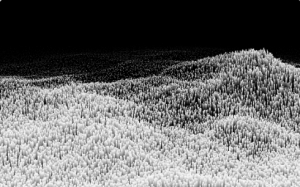
You may have heard people use the terms “data lake” and “data warehouse” interchangeably, but beyond the fact that they are widely used to store large amounts of data, they are not created equal.
In fact, aside from storing data, one could argue they have more differences than similarities.
So how do you know which you may need for your operations? This article will cover four key differences between a data warehouse and a data lake to help you make the best decision for your business.
So what is a data warehouse and a data lake?
Before we jump into the difference between a data lake and a data warehouse, it is important to understand an even more fundamental concept: databases.
We’ve all interacted with databases before, whether developing a financial report or reviewing the results of a survey. In short, a database stores structured data so it is accessible for people and applications to use to analyze and review it. The way that data makes its way to the database is one way to think about the functional differences between a data lake and a data warehouse.
So what are they?
A data warehouse is a large, centralized storage location for data that can come from a wide range of sources, including current and historical data. A data warehouse is used to feed databases with structured and cleansed data so that it can ultimately be used to create reports and make data-driven decisions.
A data lake is a large storage repository with raw, unstructured, and unprocessed data in it. As data is produced or collected, it flows into the data lake and is stored there until it is organized for use by an application for testing, analysis, or many other purposes.
What is the difference between a data lake and a data warehouse?
With the aforementioned understanding, let’s explore more deeply the functional and structural differences between a data lake and a data warehouse.
There are four main differences:
1. Data Structure
Because data stored in a data lake may not initially have a purpose when it is ingested, in general, the data is stored in its raw form. It can then be accessed and organized for testing, analysis, and machine learning purposes by a data scientist, for example. For this reason, data lakes typically have much larger storage capacity than data warehouses as organizations may not initially know what data will be of value to them.
By contrast, the data flowing into a data warehouse comes processed with a predefined structure to fit its purpose. This allows organizations to be more selective with data they store.
2. Data Purpose
Data within a data warehouse is for a specific purpose, and therefore has a logical structure to fit the application or business use it will ultimately be used for.
A data lake holds data often with a yet to be determined purpose and, therefore, has less filters or organization. This allows for future flexibility, but if an organization is not careful, its data lake can quickly turn into a data swamp that lacks proper data governance or quality standards.
3. Data Users
A data warehouse is ideal for business process owners to create dashboards, charts, graphs, reports, and other applications.
Alternatively, because the information within it is of a relatively raw state, a data lake often requires data analytics and specialized tools to help process the raw data and make it ready for operational use.
4. Data Accessibility
Finally, in most cases, a data lake’s structure and architecture are more easily accessible by users. This accessibility is possible because a data lake is more loosely defined, making it easier to add to and change the data lake without as many access controls or concerns about downstream operational impacts.
By design, a data warehouse has more access controls, structure, and security measures given the more direct link of its data to critical business uses. Because of these factors, modifications to the data structures and processing methods are more controlled in a data warehouse.
Which is right for your business?
The way your organization structures, secures, stores and uses its data is instrumental to your business operations and, when done right, it can fuel other functions and services that can help shape your organization’s growth well into the future. Some organizations make use of a data warehouse or a data lake, and some organizations make use of both.
Ready to learn more? If your organization is trying to decide which of these data structures to use—or considering using both—you likely have more questions about your next steps.
If so, our experts would welcome the chance to speak with you. Click here to get the guidance you need and, while you are at it, download our latest free resource, The Ultimate Guide to Performing a Cybersecurity Risk Assessment.


